|

Mixing of a Multiport River Diffuser
Problem definition
This is an application example of using VISJET for a river diffuser, in which boundary effects from water surface and riverbed can be significant. The river diffuser has a central rosette riser of 8 nozzles, three pairs of T-riser upstream, and three pairs of T-riser downstream, making a total of 20 jets. The total discharge is significant with Q = 12.65 m3/s, giving each horizontal jet an initial velocity of uo = 3.2 m/s. The river has a depth of H = 11.5 m, salinity 0.1 ppt, temperature 15°C and ambient current velocity Ua = 0.5 m/s.
Ua

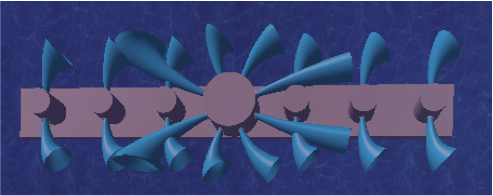
VISJET simulation results
The jet group perspective view and cross-sectional merging pattern at x = 2 m, 10 m, and 100 m are shown. The VISJET visualization shows that with uo = 3.2 m/s and Ua = 0.5 m/s, the jets have already been significantly bent over by the ambient at x = 10 m . The jets have also been significantly merged. The overlapping of jets will result in significant reduction in dilution.
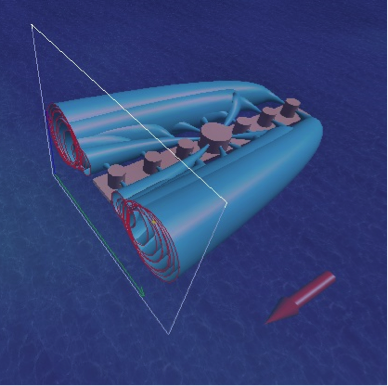
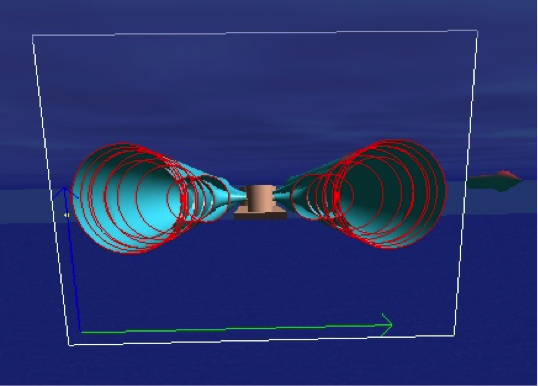
|
|
Perspective and cross-sectional view of the jet group at x = 2 m
|

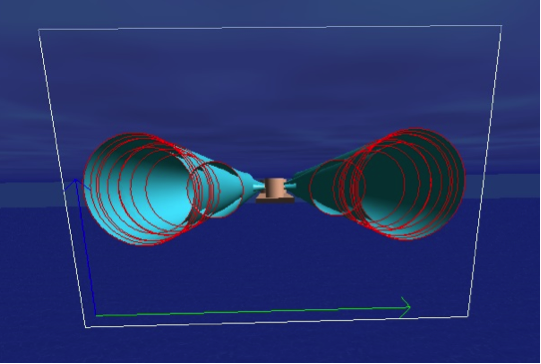
|
|
Perspective and cross-sectional view of the jet group at x = 10 m
|
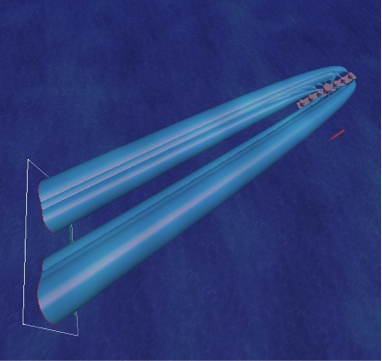
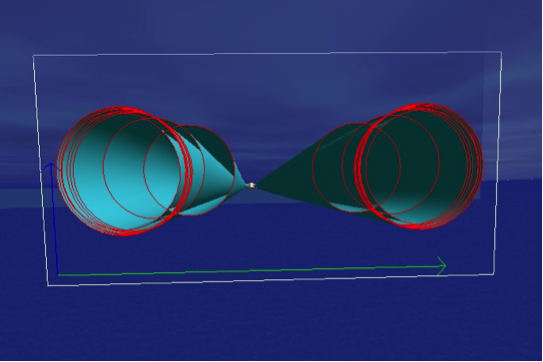
|
|
Perspective and cross-sectional view of the jet group at x = 100 m
|
VISJET predicted jet group dilution
The VISJET simulation shows that the jet group will be mixed over the river vertically at about x = 200 m. The composite dilution (Lai et al. 2011) of the jet group at this location is S=36.4, about 1/6 of the individual jet. This is realistic considering in view of the large flow and lack of buoyancy in this problem. This also demonstrates the merging of jets can significantly affect the dilution of the jet group.
Alternatively, an approximate semi-analytical method which can account for the effect of boundaries may be used to estimate the jet group dilution. Using the VISJET predicted jet characteristics when the jets are significantly bent over by the crossflow (in this case at around x = 10m), the jet group can be modelled as a coflow jet group (each with known initial position, velocity, width and concentration). The average dilution of the jet group at a downstream section can then be obtained using linear superposition of excess momentum and mass flux (Lai and Lee 2012, Pani et al. 2009). The average dilution using this method is S=28.2, comparable to the VISJET predicted composite dilution.
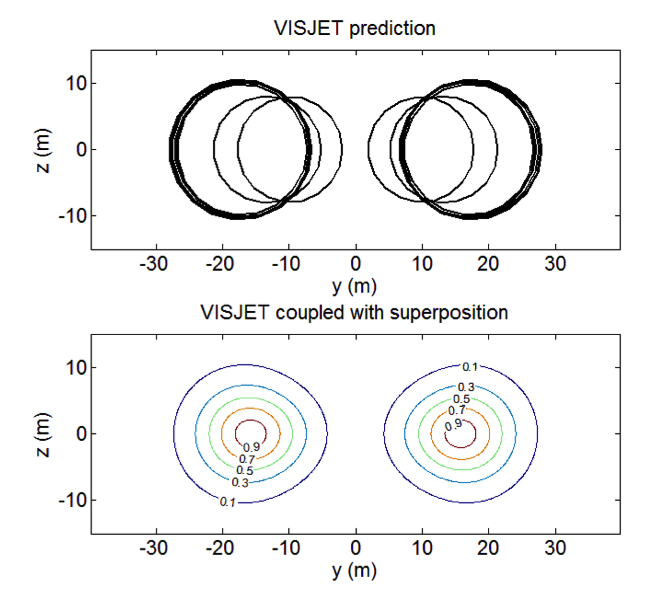
Cross-sectional view of the jet group in an unbounded ambient current (x = 200 m)
Top: VISJET predicted coordinates and size of the jet group
Bottom: Predicted concentration field using the superposition approach
Boundary effects from water surface and riverbed
The boundary effects can be accounted for by using the method of images (Pani et al. 2009). Assuming a mid-depth (H/2) discharge, this can be done by placing the 'virtual jets' at the mirrored positions (yjet, zjet ± H).
The predicted concentration field at x = 200 m assuming H = 15 m. The average dilution with water depth H = 15 m is predicted to be xS = 24.1 (15% reduction) (further reduced to S = 16.2 when H = 10 m). This illustrates the boundaries can have a significant effect on the mixing characteristics of a jet group.
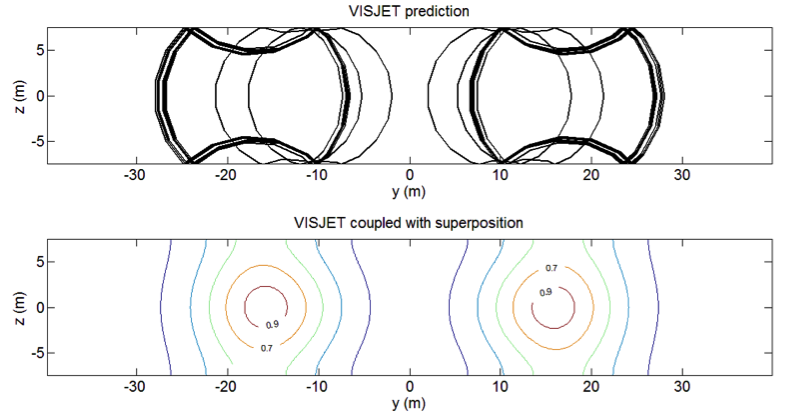
Cross-sectional view of the jet group in a bounded ambient current with H = 15m (x = 200 m)
Top: VISJET predicted coordinates and size of the jet group
Bottom: Predicted concentration field using the superposition approach and method of images
References
- Lai, A.C.H. and Lee, J.H.W. (2012), "Dynamic interaction of multiple buoyant jets", Journal of Fluid Mechanics, Vol.708, pp.539-575
- Lai, A.C.H., Yu, D.Y. and Lee, J.H.W. (2011), "Mixing of a rosette jet group in crossflow", Journal of Hydraulic Engineering, ASCE, Vol.137, No.8, August 2011, pp.787-803
- Lee, J.H.W. and Chu, V.H. (2003), Turbulent jets and plumes - a Lagrangian approach, Springer/Kluwer, 390 pp.
- Pani B.S., Lee, J.H.W. and Lai, A.C.H. (2009), "Application of Reichardt's hypothesis for multiple coflowing jets", Journal of Hydro-environment Research, Vol 3, No. 3, pp.121-128

  
|